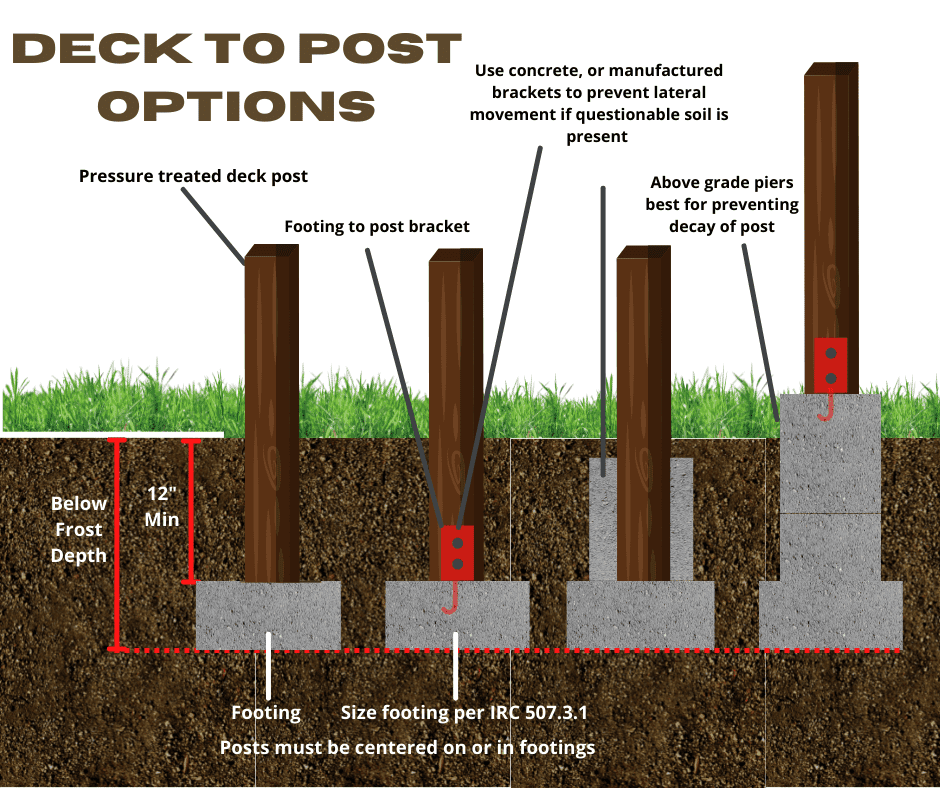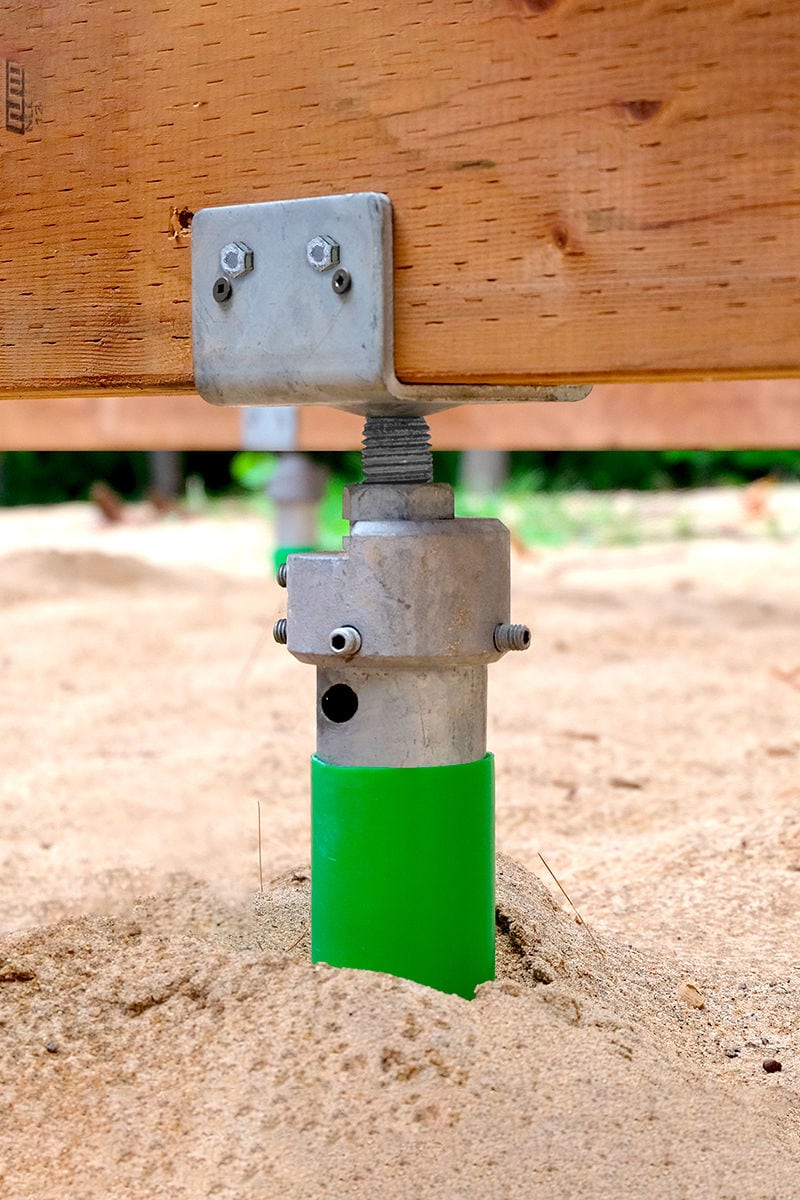Engineered for Success: The Science Behind Durable and Resistant Deck Footings
Wiki Article
Guarantee Stability and Long Life With Appropriately Set Up Deck Grounds
Deck grounds may not be the most glamorous aspect of deck building and construction, but they play a vital function in guaranteeing stability and long life. Effectively installed grounds give a strong foundation for your deck, avoiding usual problems like drooping, changing, and also collapse. However, picking the best sort of footing and appropriately installing it can be a complex process. In this discussion, we will check out the relevance of appropriate deck footings, variables to consider during setup, various kinds of footings available, step-by-step setup guide, and upkeep ideas for making sure lasting grounds. So, if you intend to ensure the security and longevity of your deck, keep reviewing to uncover the essential insights to achieve a structurally sound and resilient outside area.
Relevance of Correct Deck Grounds
Why are effectively set up deck footings vital for the stability and longevity of your deck? Deck grounds are the foundation on which the deck rests, moving the load from the deck to the ground.To start with, correctly mounted deck footings distribute the weight of the deck evenly, preventing any kind of unequal settling or sinking. This is especially crucial in locations with unstable soil, as it helps to reduce the danger of the deck breaking down or changing. In addition, well-installed grounds make sure that the deck remains level, avoiding any type of structural damage that can happen when a deck comes to be uneven.
Second of all, properly mounted footings provide a solid support for the deck, protecting against extreme movement and sway. This helps to preserve the architectural stability of the deck, minimizing the danger of injuries or accidents. It additionally decreases the wear and tear on the deck, enabling it to withstand the components and routine use for a longer amount of time.
Aspects to Take Into Consideration for Deck Footing Setup
When installing deck grounds, there are a number of vital factors to think about for proper installation. Different dirt kinds have different load-bearing capabilities, so it is vital to perform a dirt test to make sure the footings can sustain the weight of the deck and its residents. By taking right into account these variables, you can ensure the appropriate installation of deck grounds and appreciate a lasting and stable deck.Sorts Of Deck Grounds to Choose From
There are several various kinds of deck grounds readily available for you to select from. Each kind has its own advantages and drawbacks, so it's vital to consider your certain requirements and the problems of your deck before making a choice.One typical sort of deck ground is the concrete ground. This involves excavating holes in the ground and pouring concrete into them to produce a solid structure. Concrete grounds are resilient and provide exceptional security, making them ideal for decks in areas with tough soil problems or high wind lots.
An additional choice is the helical pier ground, which consists of a steel shaft with helical plates that are screwed right into the ground. These grounds fast to install and can be utilized in different soil kinds, including sandy or clay soils. They are also flexible, enabling simple leveling of the deck.
Sonotube footings are one more popular selection. More hints These grounds are developed by positioning a cardboard tube in a hole and filling it with concrete. Sonotube footings are relatively simple to mount and give appropriate security for smaller sized decks or in areas with less demanding dirt problems.

When selecting the kind of deck ground, it's essential to consider variables such as dirt problems, deck dimension and weight, local building regulations, and individual preferences. By choosing the suitable footing kind, you can make certain the stability and durability check here of your deck.
Step-by-Step Guide for Putting Up Deck Footings

Determine the place: Begin by noting the precise placement of each footing utilizing stakes and string (Deck Footings). Think about any kind of neighborhood building ordinance or regulations relating to setback distances
Dig the holes: Use an article hole miner or an auger to dig the holes for the grounds. The deepness will rely on the frost line in your location and the kind of soil. Generally, a depth of a minimum of 36 inches is advised for security.
Level the openings: Make certain that the bottoms of the openings are level (Deck Footings). This can be achieved by utilizing a level or a straight board across the top of the openings
Add gravel: Place a layer of crushed rock at the bottom of each hole to improve water drainage and protect against the ground from sinking right into the dirt over time.
Put the footing forms: Put the ground creates into the holes, guaranteeing they are focused and degree. Usage risks to secure them in position.
Mix and put concrete: Adhere to the instructions on the concrete mix bag to prepare the concrete. Put the concrete into the footing kinds, filling them totally.
Smooth the surface: Utilize a trowel to smooth the surface of the concrete and eliminate any air pockets. Enable the concrete to heal according to the manufacturer's instructions.
Maintenance Tips for Lasting Deck Grounds
Correct maintenance is essential for making certain the durability and security of deck footings. By on a regular basis evaluating and maintaining your deck footings, you can protect against damage and potential safety hazards.Normal cleaning is also crucial for maintaining deck grounds. Dirt, debris, and plant life can accumulate around the footings, which can bring about moisture build-up and decay. Cleaning the grounds routinely, utilizing a pressure or a brush washing machine, can aid avoid these concerns and prolong the life-span of your deck.
In enhancement to cleaning, it is essential to maintain the area around see this website the grounds clear of any type of obstructions. Avoid piling things against the footings or enabling plants to grow as well near to them. These obstructions can trap dampness and cause the grounds to degrade in time.
Finally, normal resealing of the footings is advised to protect them from dampness and various other ecological variables. Using a water resistant sealant can help avoid water damages and prolong the life expectancy of the footings.
Final Thought
In final thought, correct installment of deck footings is vital for making certain stability and long life of your deck. Aspects such as dirt kind, lots capacity, and neighborhood building ordinance need to be considered when picking the appropriate type of deck footings. Complying with a detailed overview for setup and normal maintenance will aid to ensure the grounds stay long-lasting and sturdy.In this conversation, we will certainly explore the importance of proper deck footings, factors to consider throughout setup, different kinds of grounds available, step-by-step setup overview, and maintenance tips for guaranteeing lasting footings. Deck grounds are the foundation on which the deck rests, transferring the load from the deck to the ground.One usual type of deck ground is the concrete footing. Place the ground types: Place the ground creates right into the holes, ensuring they are centered and level.In verdict, proper setup of deck grounds is important for guaranteeing stability and long life of your deck.
Report this wiki page